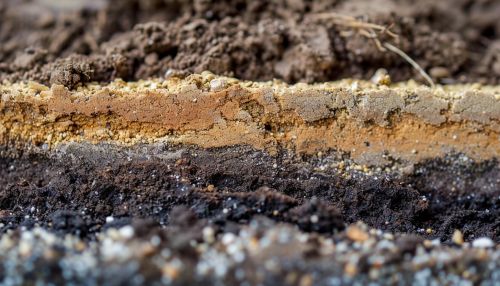Cation Exchange
Introduction
Cation exchange is a process in which one cation is displaced by another from a material's surface. This process is commonly observed in soil and water treatment, where it plays a crucial role in nutrient availability and contaminant removal. Cation exchange is a fundamental aspect of chemical reactions and is vital to various natural and industrial processes.
Cation Exchange Capacity
The cation exchange capacity (CEC) refers to the total quantity of cations that a material can hold, available for exchange. It is a critical property of soils and other materials like zeolites and clay minerals. The CEC of a soil is determined by the amount and type of clay minerals present, the amount of organic matter, and the soil's pH. Soils with high CEC can hold more nutrients and are generally more fertile than soils with low CEC.


Mechanism of Cation Exchange
Cation exchange occurs when two or more positively charged ions switch places. This process is facilitated by the presence of a negatively charged entity, such as a clay particle or an organic molecule. The cations are attracted to these negatively charged entities and can be easily replaced by other cations in the surrounding environment. This mechanism is essential in many natural processes, such as nutrient absorption by plants and the buffering capacity of soils.
Role in Soil Fertility
Cation exchange plays a significant role in soil fertility. Essential nutrients like potassium, calcium, and magnesium are held by the soil particles and are released into the soil solution where they can be absorbed by plant roots. The ability of a soil to hold and supply nutrients to plants is directly related to its cation exchange capacity. Soils with high CEC can supply more nutrients to plants, leading to better plant growth and higher crop yields.
Cation Exchange in Water Treatment
In water treatment, cation exchange is used to remove unwanted cations from water. This is achieved using a cation exchange resin, which is a type of polymer that can exchange its cations with those in the water. This process is commonly used to soften hard water by removing calcium and magnesium ions, which can cause scale buildup in pipes and appliances.
Cation Exchange Resins
Cation exchange resins are synthetic polymers that function as exchange mediums for cations. They have numerous applications, including water softening, metal recovery, and pharmaceuticals. The resins are typically made from polystyrene and are cross-linked with divinylbenzene to create a network of exchange sites. The type and number of functional groups attached to the resin determine its exchange capacity and selectivity.
Applications of Cation Exchange
Beyond soil fertility and water treatment, cation exchange has numerous other applications. It is used in the recovery of precious metals, the purification of pharmaceuticals, and the production of high-purity water for industrial processes. In the environmental field, cation exchange is used to remediate contaminated soils and groundwater.
